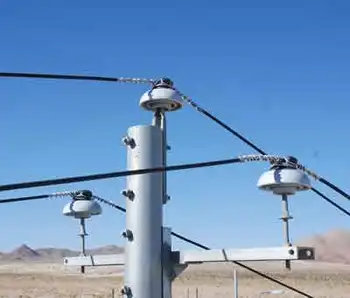Painting a Canadian energy mosaic
By PennEnergy
High Voltage Maintenance Training Online
Our customized live online or in‑person group training can be delivered to your staff at your location.

- Live Online
- 12 hours Instructor-led
- Group Training Available
The meetings will take place across Canada and will consider the range of energy opportunities and challenges facing the federation of provinces.
"To get a national view you need to look at the 13 provinces and the federal government," said Murray Stewart, president of the Energy Council of Canada. The council is a founding member of the World Energy Council whose 95 member countries gather once every three years in a formal Congress to discuss energy policy. The Worid Energy Council is perhaps the only group that looks at energy on a global scale through studies, research, trade and policy scenarios.
Closer to home, the Canadian energy council helped Ontario's government devise an energy efficiency plan several years ago.
Much of the council's work is research, but a lot is also focused on identifying best practices, Stewart said. Leading up to the World Energy Congress in Rome in 2007, for example, work focused on pinpointing strategics that proved useful at reducing carbon as part of a policy addressing climate change.
As a global energy leader, Canada's resources include oil sands reserves, uranium and hydroelectricity, a substantial portion of which is exported to the United States.
In turn, each of Canada's provinces offers a unique energy profile. Nova Scotia in the East is powered primarily with electricity derived from native coal, although efforts are underway to harness tides in the Bay of Fundy as a major renewable energy resource.
Farther west, policy dictates that not less than 50 percent of Ontario's electricity will be generated by nuclear sources. The province is on track to retire its final coal-fired power plants by 2014, replacing their output with natural gas in the short term and nuclear, hydro, wind and solar longer-term.
Neighboring Quebec is powered almost entirely by hydroelectricity with enough energy resources left over for significant exports to the Northeastern U.S.
Manitoba's and Saskatchewan's electricity resources are primarily hydro as is British Columbia's. Sandwiched in between is energy powerhouse Alberta, which is home to the economically important and environmentally controversial oil sands deposit, but is also powered largely by coal. Alberta is the focus for much of Canada's investment in carbon capture and storage research and also may be the site of a future nuclear power plant to help harvest the oil sands resource.
With such a sweep of resources, Canada seems set to offer the 2010 World Energy Congress a good platform on which to discuss environmental issues related to energy.
Stewart said the Congress will also discuss what is referred to by organizers as the "four A's" of energy: access, availability, acceptability and accountability. Access relates to managing global energy demand, availability refers to building adequate energy supplies, acceptability points to developing sustainable solutions and accountability considers issues such as regulation, permitting and financing.
The forums taking place across Canada in the coming months are the first time a comprehensive effort has been made to write a single national energy story, Stewart says. Their results may help the provincial and federal governments craft future energy policy and gets back to the idea of creating a Canadian energy mosaic, Stewart said.
The next forum takes place October 21 in Calgary, Alberta. The focus there likely will be oil and natural gas as well as foreign trade. For more information, contact the Energy Council of Canada. There you can also learn more about the upcoming World Energy Congress.











